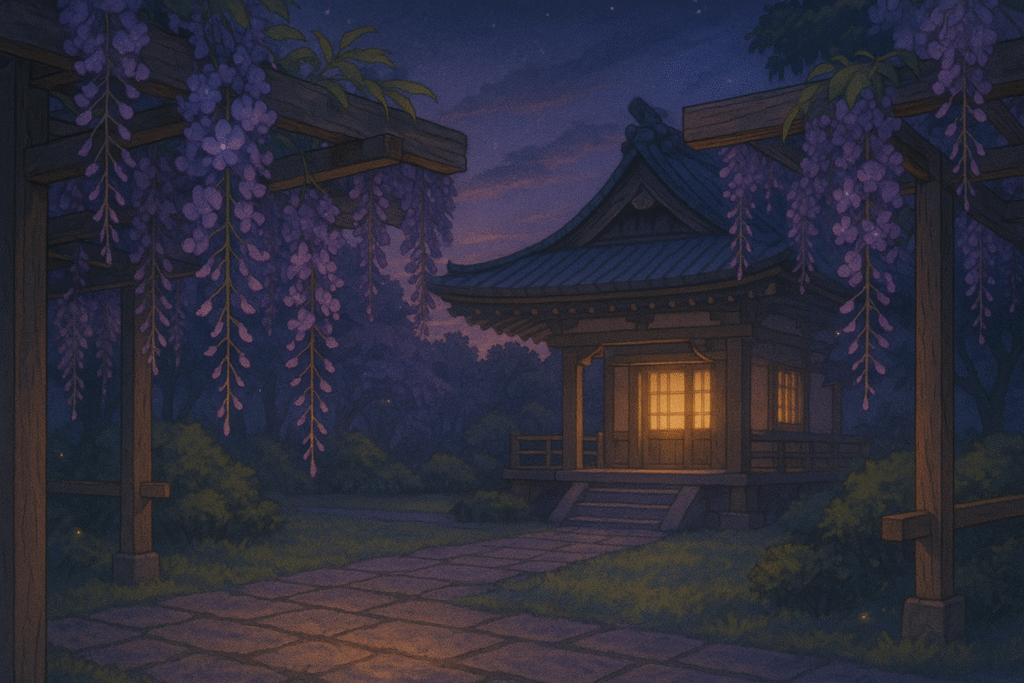Have you ever found yourself admiring the stunning purple wisteria blossoms cascading from ancient Japanese temples, wondering how to express this royal color in Japanese? Or perhaps you’re watching your favorite anime and noticed characters wearing elegant purple kimonos, leaving you curious about the cultural significance behind this mesmerizing hue?
What is purple in Japanese? The most common word for purple in Japanese is murasaki (紫), but this beautiful language offers several nuanced ways to express different shades of purple, each carrying its own cultural weight and historical significance.
Understanding how to say purple in Japanese isn’t just about vocabulary—it’s about unlocking a window into Japanese culture, where colors carry deep meanings and tell stories spanning centuries. Whether you’re preparing for your JLPT N5 exam or simply want to enrich your Japanese conversations, mastering color vocabulary will elevate your language skills dramatically.
The Primary Word: Murasaki (紫)
The fundamental answer to “what is purple in Japanese” is murasaki (紫). This kanji character represents not just a color, but a piece of Japanese history.
Pronunciation: mu-ra-sa-ki
Kanji: 紫
Usage: This is the standard term for purple in both formal and casual contexts.
Example Sentences:
- Murasaki no hana ga kirei desu. (紫の花がきれいです。)
The purple flowers are beautiful. - Kono murasaki no kimono wa takai desu. (この紫の着物は高いです。)
This purple kimono is expensive.
Grammar Rules for Purple in Japanese
When learning what is purple in Japanese, understanding the grammatical structure is crucial. Unlike some basic colors that can function as i-adjectives, murasaki requires the particle no (の) to modify nouns.
Correct Usage Pattern:
Murasaki no + noun
Incorrect: ❌ Murasaki kuruma (紫車)
Correct: ✅ Murasaki no kuruma (紫の車) – purple car
This grammatical rule applies to most secondary colors in Japanese, making murasaki consistent with other sophisticated color terms.
Different Shades of Purple in Japanese
Just as English has various purple shades, Japanese offers multiple terms for different purple tones:
Light Purple Variations:
- Fujiiro (藤色) – Wisteria purple, a light purple-pink
- Umemurasaki (梅紫) – Plum purple, elegant and refined
Deep Purple Variations:
- Nasukon (茄子紺) – Eggplant purple, a deep violet
- Ebiiro (葡萄色) – Grape purple, rich and luxurious
Modern Purple Terms:
- Baioretto (バイオレット) – Violet (borrowed from English)
- Pāpuru (パープル) – Purple (direct English loan word)
Cultural Significance of Purple in Japan
Understanding what is purple in Japanese goes beyond vocabulary—it’s about appreciating cultural context. Historically, purple held immense significance in Japanese society.
Want to explore Japan’s culture?
Discover Japan’s rich culture, traditions, and hidden gems with our expertly crafted guides. Get insider tips on travel, food, and history. All for free!
Historical Importance:
Purple dye was incredibly expensive to produce, making it a symbol of nobility and high rank. The Murasaki Shikibu, author of “The Tale of Genji,” took her pen name from this prestigious color.
Modern Associations:
- Elegance and sophistication
- Spiritual depth and mystery
- Artistic expression
- Imperial dignity
Practical Usage Tips
When expressing what is purple in Japanese in daily conversation, consider these practical applications:
In Shopping:
- Murasaki no sētā wa arimasu ka? (紫のセーターはありますか?)
Do you have a purple sweater?
Describing Nature:
- Yūgure no sora ga murasaki ni natta. (夕暮れの空が紫になった。)
The evening sky turned purple.
Fashion and Beauty:
- Murasaki no rippu ga yoku niau. (紫のリップがよく似合う。)
Purple lipstick suits you well.
Learning Strategy for Japanese Colors
Mastering what is purple in Japanese is part of a broader color vocabulary journey. Here are effective learning strategies:
- Visual Association: Connect each shade with real-world objects
- Cultural Context: Learn the historical significance behind each color
- Grammar Practice: Master the no-particle usage pattern
- Immersion: Watch Japanese media and identify color descriptions
Similar to learning other Japanese fundamentals like understanding “baka” in Japanese culture, color vocabulary requires both linguistic and cultural awareness.
Common Mistakes to Avoid
When learning what is purple in Japanese, students often make these errors:
- Forgetting the no particle: Remember it’s “murasaki no,” not just “murasaki”
- Confusing loan words: Understand when to use murasaki vs. pāpuru
- Ignoring context: Consider formality levels in different situations
Quick Reference Guide
| Japanese | Romaji | English | Usage Context |
|---|---|---|---|
| 紫 | murasaki | purple | Standard, formal |
| 藤色 | fujiiro | wisteria purple | Poetic, nature |
| 梅紫 | umemurasaki | plum purple | Traditional |
| パープル | pāpuru | purple | Casual, modern |
FAQ Section
Q: What is the most common way to say purple in Japanese?
A: Murasaki (紫) is the most common and standard way to say purple in Japanese.
Q: Can I use “pāpuru” instead of “murasaki”?
A: Yes, but “pāpuru” is more casual and modern, while “murasaki” is more traditional and formal.
Q: Do I need to use “no” with murasaki?
A: Yes, when modifying nouns, you must use “murasaki no” (紫の) followed by the noun.
Q: What’s the difference between murasaki and fujiiro?
A: Murasaki is general purple, while fujiiro specifically refers to the light purple color of wisteria flowers.
Q: Is purple considered lucky in Japanese culture?
A: Purple traditionally symbolizes nobility and sophistication rather than luck, though it’s generally viewed positively.
Conclusion
Understanding what is purple in Japanese opens doors to richer communication and deeper cultural appreciation. From the elegant murasaki of traditional kimonos to the vibrant pāpuru of modern fashion, purple vocabulary enhances your Japanese expression significantly.
Remember, mastering murasaki is just one step in your Japanese learning journey. As you continue studying—whether for daily conversation or your JLPT N5 preparation—each color you learn adds another brushstroke to your linguistic palette.
Start incorporating these purple terms into your daily Japanese practice, and watch as your vocabulary blooms like beautiful murasaki wisteria in spring!
Love Japan? Stay in the Loop!
Get the best of Japan straight to your inbox: language, culture & travel insights!




